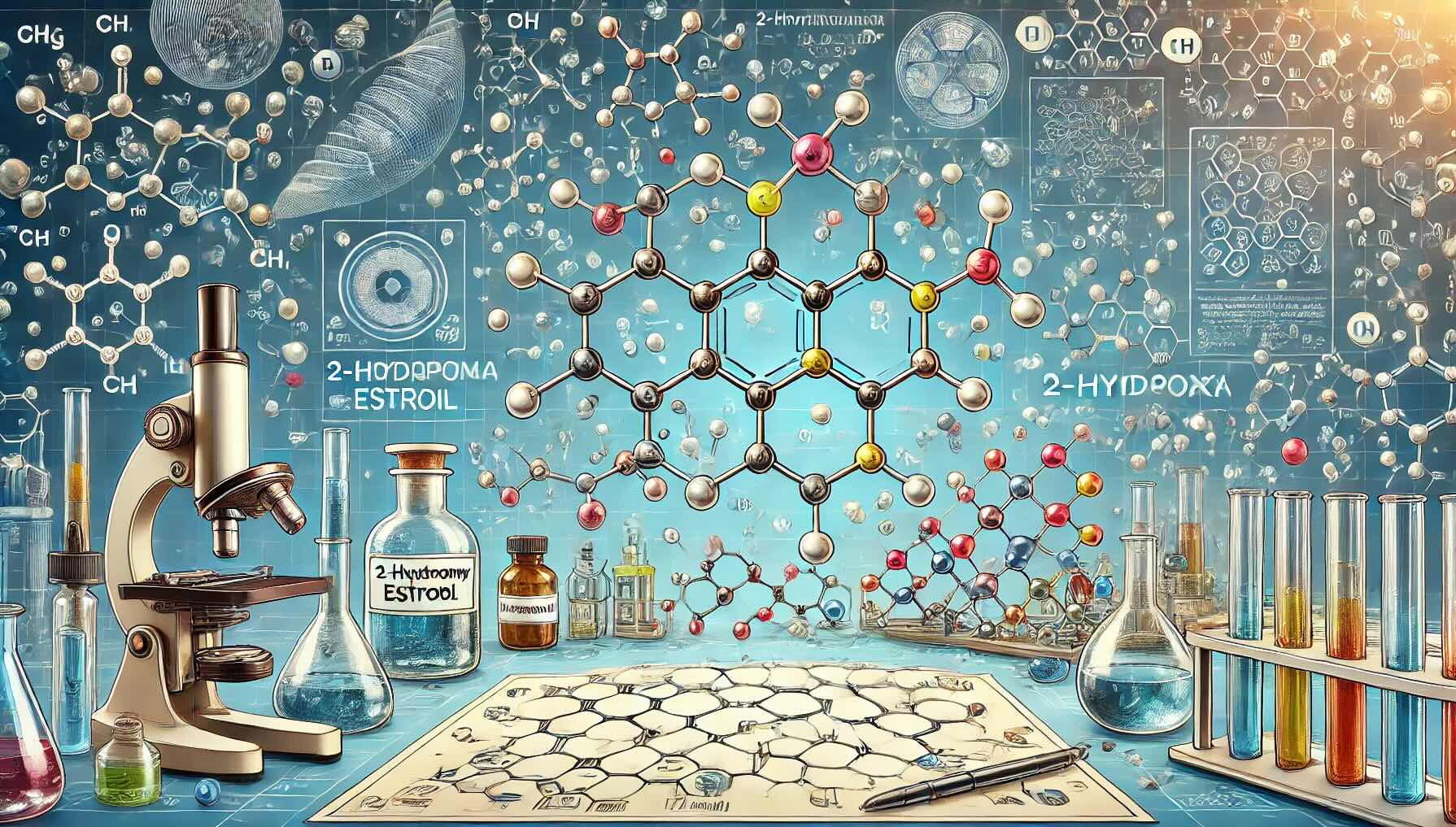
2-Hydroxyestriol might sound like a mouthful, but it's a fascinating compound with a lot to offer. Found in the human body, this metabolite of estriol plays a crucial role in various biological processes. Did you know that 2-Hydroxyestriol is one of the many estrogen metabolites that can be measured to assess hormone balance? This compound is particularly interesting because it has been studied for its potential impact on breast cancer risk. Researchers are diving deep into understanding how it interacts with other hormones and its overall effects on health. Whether you're a science enthusiast or just curious about how your body works, learning about 2-Hydroxyestriol can provide some eye-opening insights. Let's explore 25 intriguing facts about this unique metabolite!
Key Takeaways:
- 2-Hydroxyestriol, a key estrogen metabolite, has antioxidant properties and may impact breast cancer risk and pregnancy health. It's crucial for fetal well-being and has potential therapeutic applications.
- Research on 2-Hydroxyestriol is ongoing, exploring its role in hormone replacement therapy, disease biomarkers, and new therapeutic agents. Understanding its functions and detection methods is vital for health monitoring.
What is 2-Hydroxyestriol?
2-Hydroxyestriol is a metabolite of estriol, one of the three main estrogens produced by the human body. This compound plays a significant role in various biological processes and has been the subject of numerous studies.
- 2-Hydroxyestriol is a derivative of estriol, a hormone primarily produced during pregnancy.
- It is formed through the hydroxylation of estriol at the second carbon position.
- This compound is part of the estrogen metabolism pathway, which includes estrone and estradiol.
Biological Functions of 2-Hydroxyestriol
Understanding the biological functions of 2-Hydroxyestriol helps in grasping its importance in human health and disease.
- 2-Hydroxyestriol has antioxidant properties, which help protect cells from oxidative stress.
- It can bind to estrogen receptors, influencing various physiological processes.
- This metabolite plays a role in regulating the menstrual cycle and reproductive health.
- It has been studied for its potential effects on bone density and cardiovascular health.
Health Implications of 2-Hydroxyestriol
Research has shown that 2-Hydroxyestriol may have several health implications, both positive and negative.
- Elevated levels of 2-Hydroxyestriol have been linked to a reduced risk of breast cancer.
- Low levels of this metabolite may be associated with an increased risk of osteoporosis.
- It has been investigated for its potential role in protecting against neurodegenerative diseases.
- Some studies suggest that it may have anti-inflammatory properties.
2-Hydroxyestriol in Pregnancy
During pregnancy, the levels of various hormones, including 2-Hydroxyestriol, change significantly.
- 2-Hydroxyestriol levels increase during pregnancy, peaking in the third trimester.
- It is considered a marker for fetal well-being and placental function.
- Abnormal levels of this metabolite can indicate potential complications in pregnancy.
- It is often measured in prenatal screening tests to assess the risk of certain birth defects.
Detection and Measurement
Accurate detection and measurement of 2-Hydroxyestriol are crucial for research and clinical purposes.
- 2-Hydroxyestriol can be measured in blood, urine, and saliva samples.
- High-performance liquid chromatography (HPLC) is commonly used for its detection.
- Mass spectrometry provides precise quantification of this metabolite.
- Regular monitoring can help in early detection of hormonal imbalances.
Research and Future Directions
Ongoing research continues to uncover new aspects of 2-Hydroxyestriol and its potential applications.
- Current studies are exploring its role in hormone replacement therapy.
- Researchers are investigating its potential as a biomarker for various diseases.
- There is interest in its use for developing new therapeutic agents.
- Future research aims to better understand its mechanisms of action.
Interesting Facts
Here are some intriguing tidbits about 2-Hydroxyestriol that highlight its unique characteristics.
- 2-Hydroxyestriol is one of the least studied estrogen metabolites, despite its importance.
- It has a shorter half-life compared to other estrogen metabolites, making it more challenging to study.
Final Thoughts on 2-Hydroxyestriol
2-Hydroxyestriol is a fascinating compound with significant roles in human biology. From its presence in pregnancy to its potential in cancer research, this estrogen metabolite offers a wealth of insights. Understanding its functions can lead to breakthroughs in medical science, particularly in women's health. While much has been discovered, ongoing research continues to uncover new aspects of this intriguing molecule. Whether you're a student, a researcher, or just curious, knowing these facts can deepen your appreciation for the complexities of human biology. Keep an eye on future studies, as they promise to reveal even more about 2-Hydroxyestriol's impact on our health. Stay informed, stay curious, and never stop exploring the wonders of science.
Frequently Asked Questions
Was this page helpful?
Our commitment to delivering trustworthy and engaging content is at the heart of what we do. Each fact on our site is contributed by real users like you, bringing a wealth of diverse insights and information. To ensure the highest standards of accuracy and reliability, our dedicated editors meticulously review each submission. This process guarantees that the facts we share are not only fascinating but also credible. Trust in our commitment to quality and authenticity as you explore and learn with us.
